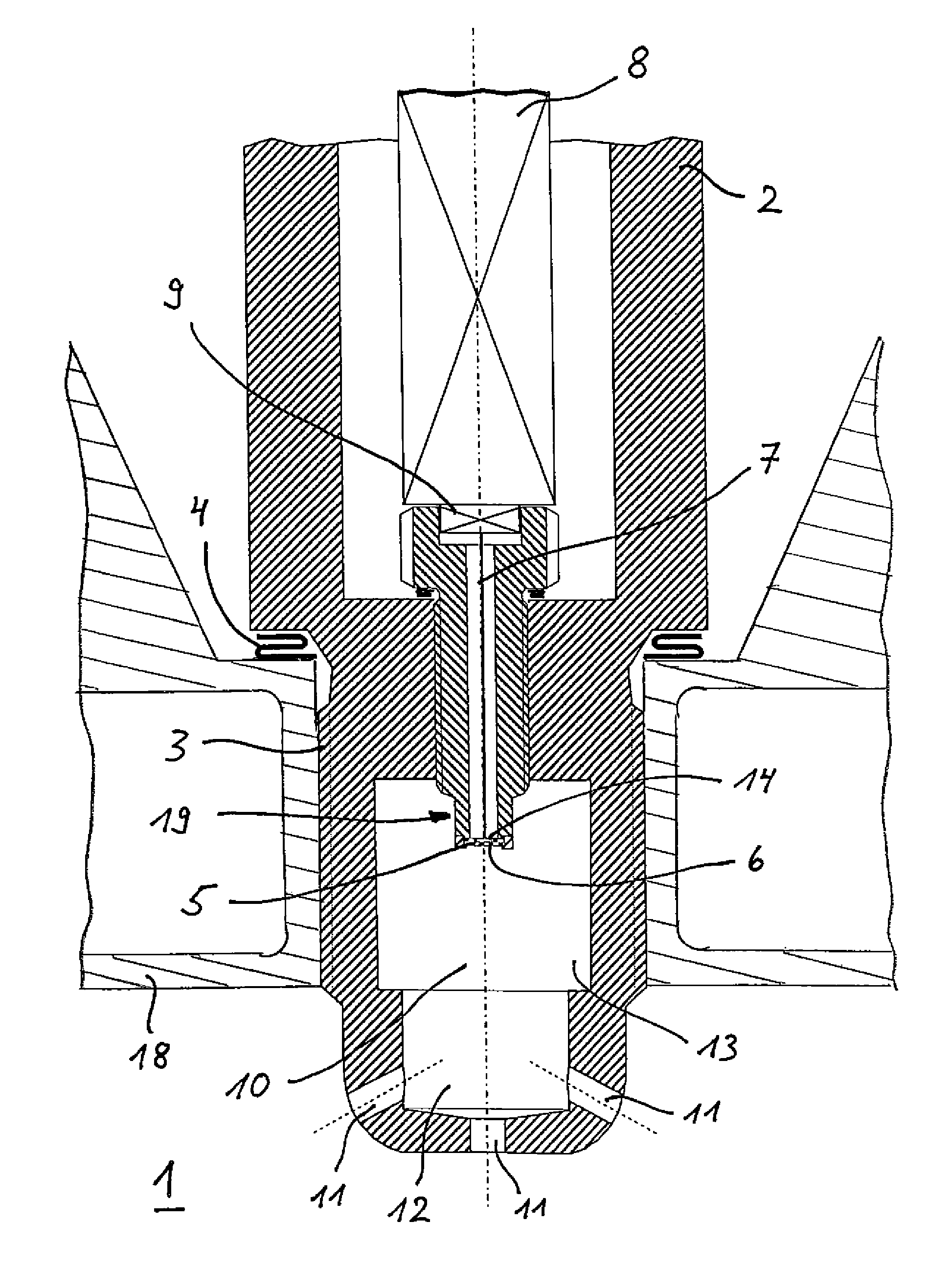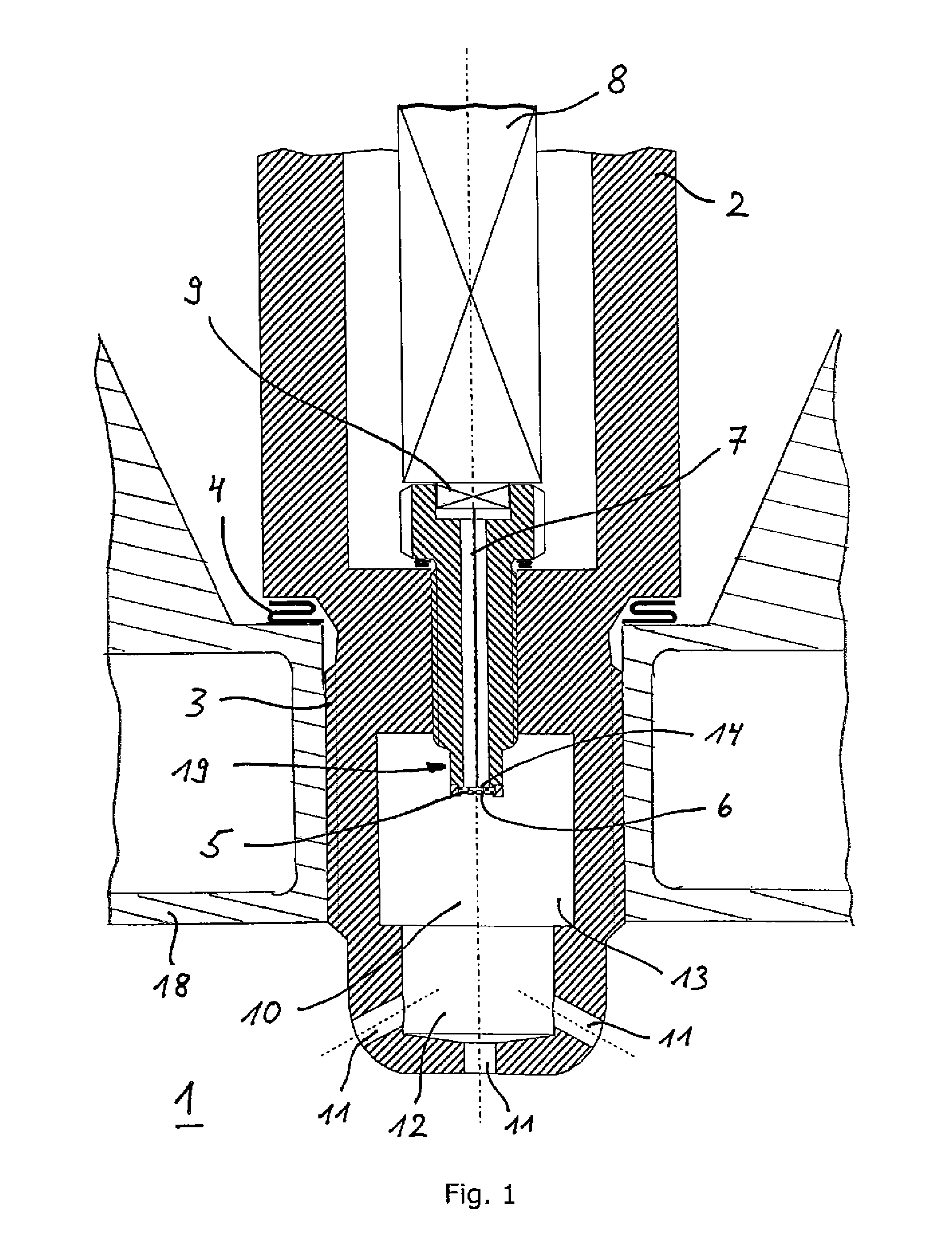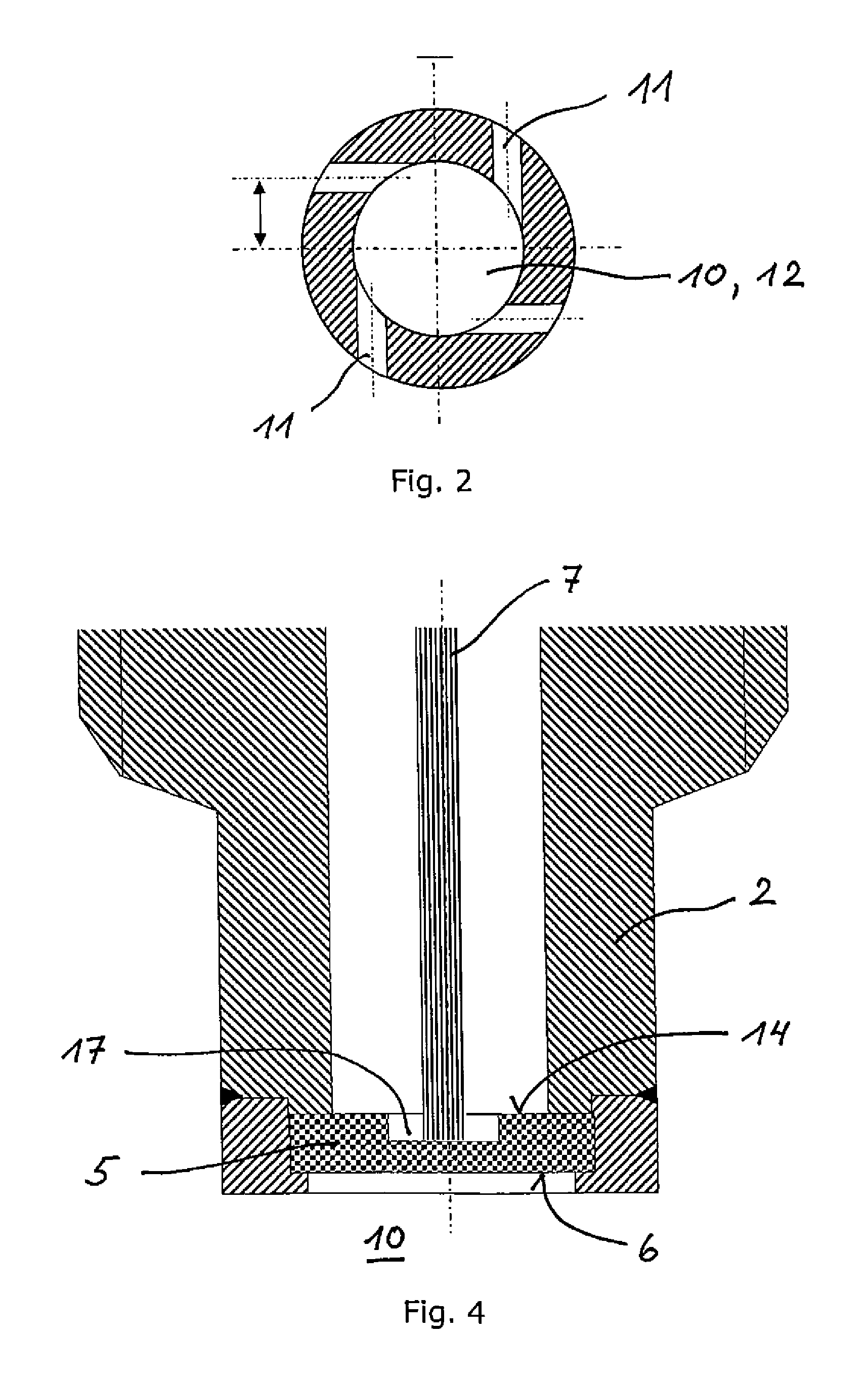Laser ignition for gas mixtures
a gas mixture and laser ignition technology, which is applied in the installation of electric ignitions, engine components, machines/engines, etc., can solve the problems of mixture extinguishing, extremely small ignition core, and low ignition reliability of laser ignitions, so as to improve the properties of laser ignition, improve the efficiency of laser ignition, and improve the effect of laser ignition
- Summary
- Abstract
- Description
- Claims
- Application Information
AI Technical Summary
Benefits of technology
Problems solved by technology
Method used
Image
Examples
Embodiment Construction
[0043]FIG. 1 shows an ignition device according to the invention for the ignition of a combustible or explosive gas mixture in a main combustion chamber 1, in particular for the ignition of a fuel-air mixture or a combustion gas-air mixture in an internal combustion engine. With a hot-spot laser ignition according to the prior art, i.e. without prechamber 10, main combustion chamber 1 is the same as the combustion chamber ignited from the hot-spot. The ignition device is designed in the form of a spark plug 2 which can be mounted in the wall of a cylinder head 18. For this purpose, spark plug 2 comprises an external thread 3 and a gasket 4, with which it can be screwed in a sealed manner into the wall of cylinder head 18. It comprises a high temperature-resistant absorber body 5, which is arranged in contact with gas mixture coming from main combustion chamber 1, with a combustion chamber inner side 6 facing the gas mixture, i.e. the gas mixture in a prechamber 10.
[0044]Spark plug 2...
PUM
 Login to View More
Login to View More Abstract
Description
Claims
Application Information
 Login to View More
Login to View More - R&D
- Intellectual Property
- Life Sciences
- Materials
- Tech Scout
- Unparalleled Data Quality
- Higher Quality Content
- 60% Fewer Hallucinations
Browse by: Latest US Patents, China's latest patents, Technical Efficacy Thesaurus, Application Domain, Technology Topic, Popular Technical Reports.
© 2025 PatSnap. All rights reserved.Legal|Privacy policy|Modern Slavery Act Transparency Statement|Sitemap|About US| Contact US: help@patsnap.com



